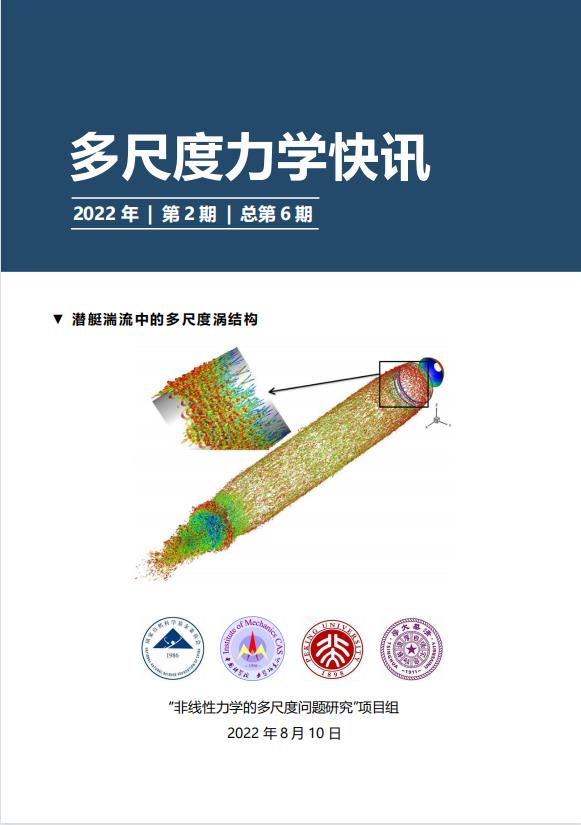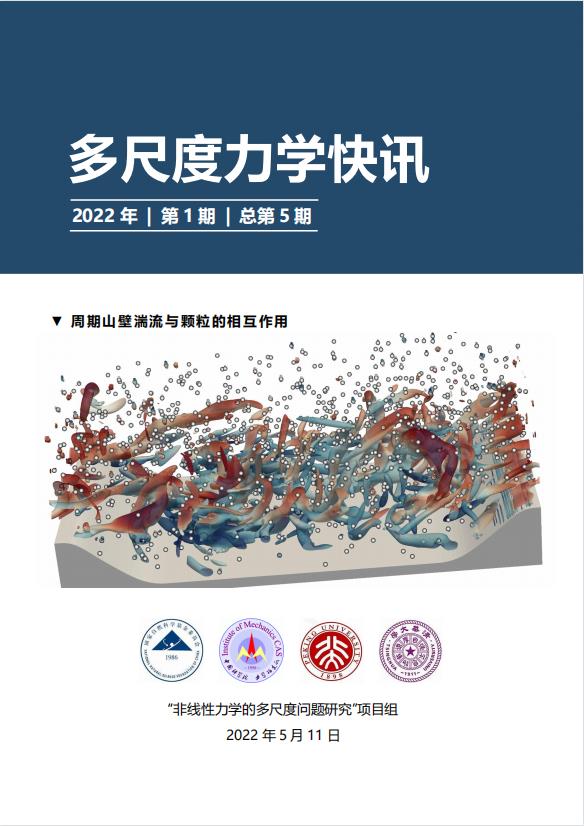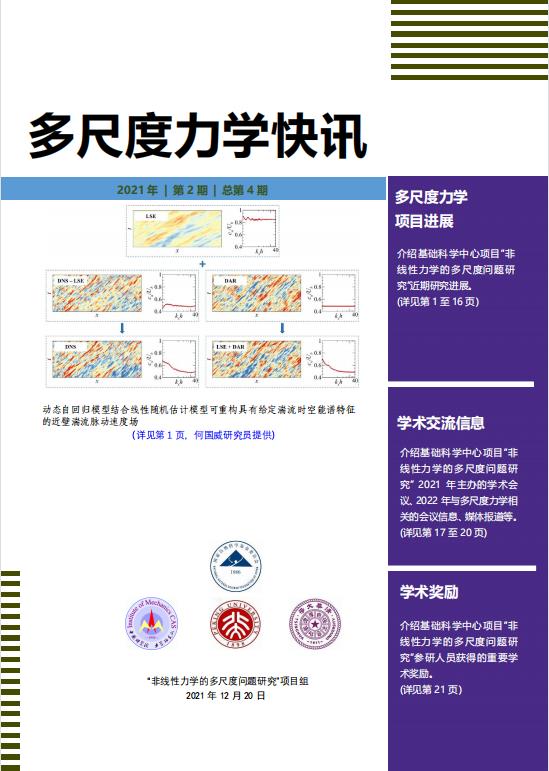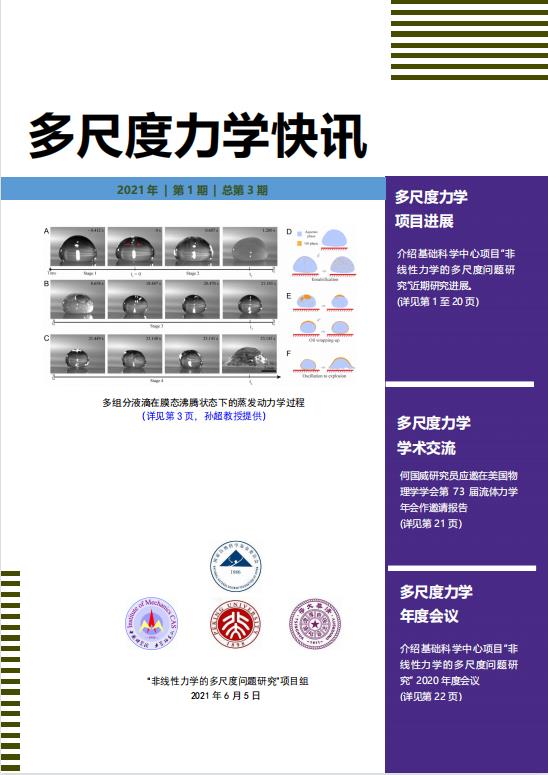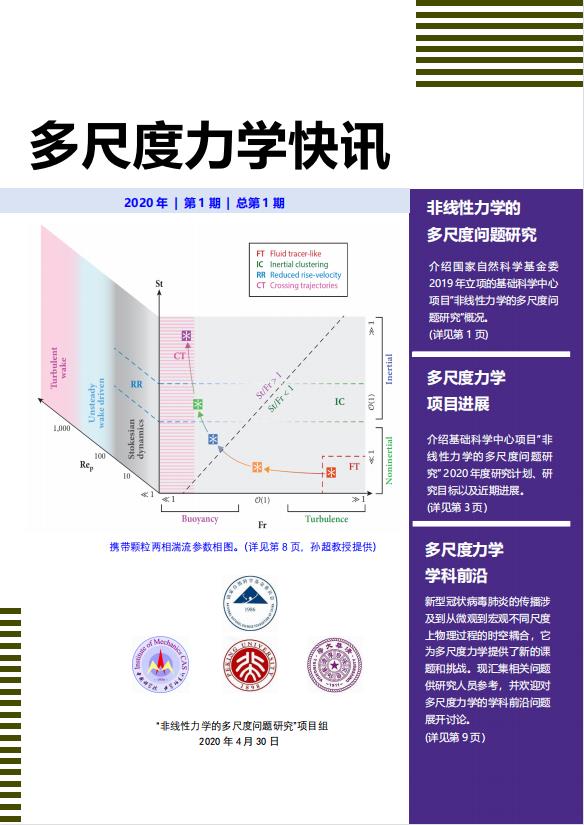Center for Multiscale Mechanics
Background
Multiscale problems are key and frontier problems in nonlinear mechanics. Fluid turbulence and solid failure, two major scientific issues in nonlinear mechanics, are typical multiscale coupling problems. They are also among the 125 mechanics-related scientific problems listed in Science. Meanwhile, the bottlenecks in the development of high-speed transport equipment, such as turbulent noise and material strength, are also typical strong multiscale coupling problems. Therefore, the research on multiscale problems plays a crucial role in the progress of nonlinear mechanics and the development of high-speed transportation equipment.
Project Team
The NSFC Basic Science Center Program for “Multiscale Problems in Nonlinear Mechanics” (referred to as the “Center for Multiscale Mechanics”) was initiated by the National Natural Science Foundation of China (NSFC) in 2019 and will run from January 2020 to December 2024. The project is led by He Guowei, an academician of the Chinese Academy of Sciences (CAS) from the Institute of Mechanics, CAS, and supported by the cooperative research institutions of Peking University and Tsinghua University. The members of the project consist of young and middle-aged scientists with international reputations in the field of nonlinear mechanics, including Academician Chen Shiyi and Professor Tang Shaoqiang from Peking University, Professor Sun Chao from Tsinghua University, and Professor Wei Yujie from the Institute of Mechanics, CAS.
Key Issues on the Scientific Frontiers
To establish the dynamic coupling theory and method for spatiotemporal scales of turbulent noise, apply them to the full-scale simulation of high-speed transport equipment noise, and provide new principles and design tools for turbulent noise control.
To develop the theories and models for the interaction between turbulence and discrete phases such as particles, bubbles, and droplets in two-phase turbulent flows, study the turbulent drag reduction mechanism of bubbles, and establish controlling methods for the transport of two-phase flows at relatively high Reynolds numbers.
To establish a correlation theory and constitutive model for the macroscopic behaviors and microstructures in solids, develop the formation and nonlinear evolution dynamics of mesoscale structures, and establish an efficient algorithm for coupling meso- and micro-scale local structures and macroscopic behaviors.
Expected Outcomes
The project focuses on four types of multiscale coupling problems: (1) macro and micro scales; (2) time and space scales; (3) continuous and discrete; and (4) deterministic and stochastic. Starting from three typical cases of "turbulent noise", "particle/bubble turbulent interaction", and "microstructure and solid strength", we will develop the theory and method of multiscale coupling in nonlinear mechanics. Through the close cooperation and collaborative research of the project team, we will fully leverage the advantages of interdisciplinary research to make significant progress in the key scientific issues of fluid turbulence and solid failure. Based on the vortex propagation and distortion process in turbulent flows, we will develop a spatiotemporal correlation model of turbulence, propose identification methods and control principles for turbulent noise sources; we will research the interaction between turbulence and particle bubbles, make an overall analysis with direct numerical simulation and experiment, develop coupling methods for discrete and continuous phases, and raise new mechanisms for bubble turbulence drag reduction; we will develop multiscale models and methods for solid failure, reveal the formation and emerging laws of mesoscopic structures, and predict the intrinsic correlation between multi-level structures and macroscopic mechanical properties.
Project Objectives
The basic science center has been established to develop a new knowledge system for multiscale mechanics, consolidate and cultivate a high-level research team in multiscale mechanics, establish an international highland for the research on nonlinear mechanics, and develop a new generation of numerical simulation software for turbulent drag reduction, noise reduction, and solid damage problems in high-speed transportation equipment, thus putting forward new principles and developing new technologies.
Road Map of the Project

Road Map of the Project

